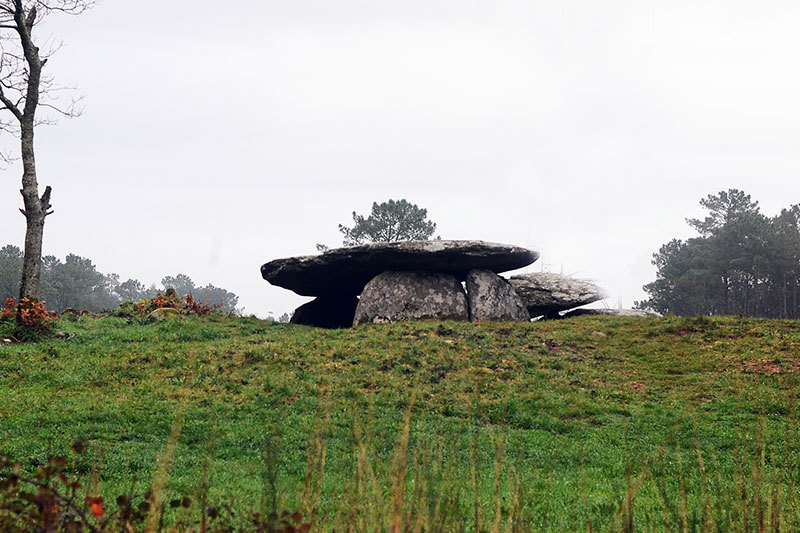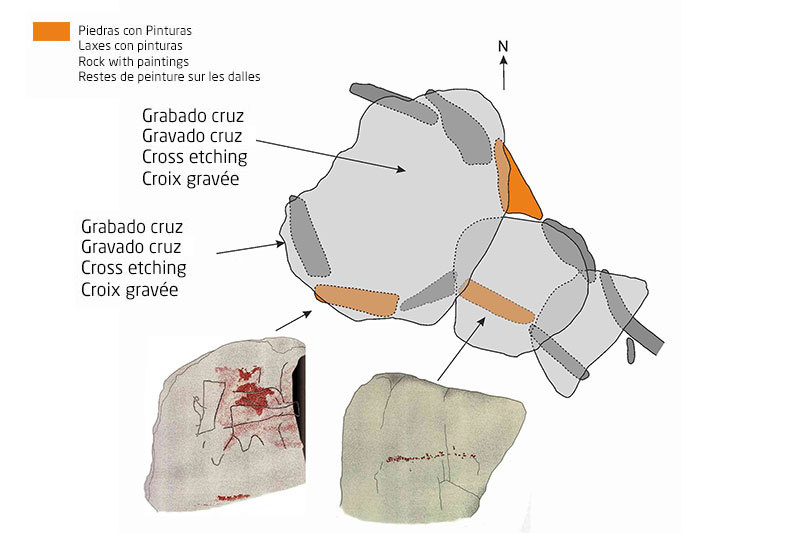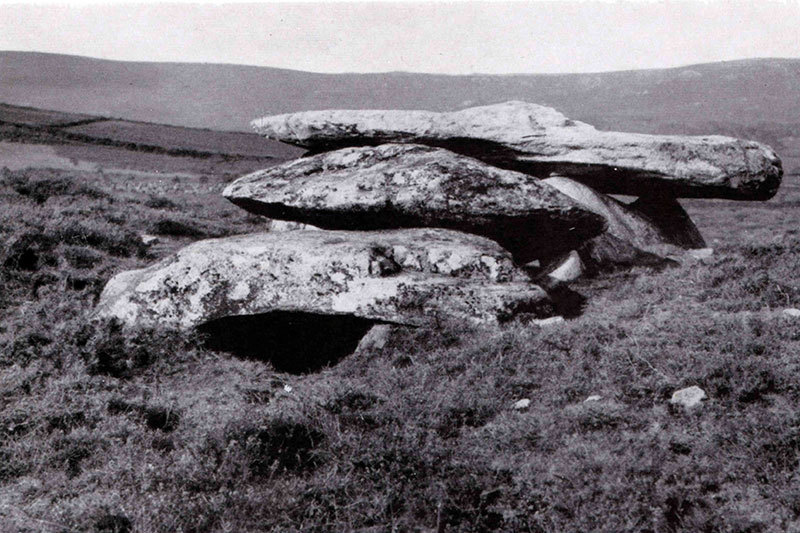Also known as Casa dos Mouros, it is one of the largest megalithic monuments in Galicia. It still preserves a good portion of the volume of its earthen tumulus and the greater part of the dolmen with its passage, lacking only the rear slab which would close the chamber.
In the chamber and on the capstone 2 etched crosses can be seen which may have functioned in historical times as boundary crosses, since the dolmen is located on the border between the parishes of Baiñas (Vimianzo) and Olveira (Dumbría).
The inside of the chamber also conserves remains of etchings and prehistoric red painting. The most noteworthy motif of the etchings is a design which is also located on other dolmens in the Northwest such as Dombate, Anta de Espiñaredo and—near to the Duero—Chá de Parada. It was called “The Thing,” by the Irish archeologist Elisabeth Shee and the term has been popularized up through the present day. There are several interpretations as to what this symbol might represent. Some believe it might be an axe, while others have signaled that it might be a representation of a sperm whale. At any rate, it seems clear that it was a figure of great symbolic meaning because of its recurrent presence in megalithic chambers of the Iberian Peninsula. In the case of the Pedra da Arca there are 2 etched figures of this type together with wavy lines and other features difficult to interpret.
An interesting fact is that the dolmen was constructed with 3 different types of stones, all present in the immediate vicinity with the exception of the stone containing the etchings, which is granodiorite and would have had to be brought in from a distance of 3 km.


